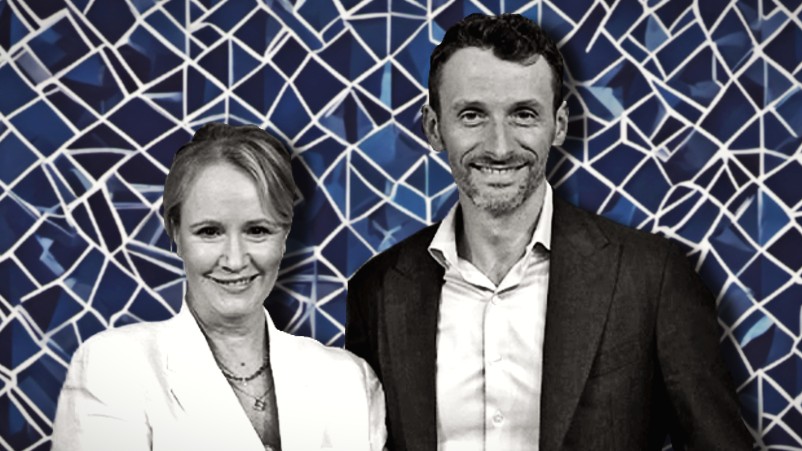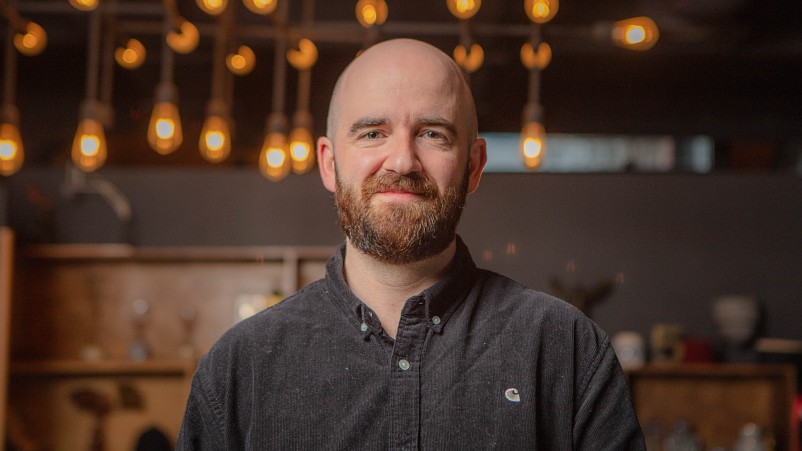Linear TV audiences have stabilised but it doesn’t matter, say top Paramount-Ten execs as ad tier streaming service launch set to 'take a lot of volume'

Paramount ANZ's Beverley McGarvey and Paramout+ global boss Marco Nobili: "Will BVOD ever make up the the gap of linear audience losses? Probably not,” says McGarvey.
One of the top global bosses for the Paramount+ streaming service, Marco Nobili, was in Australia this week in the lead-up to the launch of an advertising subscription tier for Paramount+ and he expects the $6.99 entry point will “take a lot of volume”. The newly minted President for Network 10, Head of Streaming and Paramount regional lead, Beverley McGarvey, acknowledged broadcaster BVOD services were never likely to replace linear’s TV’s audience erosion alone but when audiences from its SVOD, BVOD, linear and FAST – or free digital ad-supported linear TV channels – are bundled, the business is “getting closer to a one-for-one” replacement of linear TV. But both execs say that’s also less important than the business economics of a combined subscription and advertising business. Australia is in Paramount’s top tier globally for SVOD ARPU – or average revenue per user.
Marco Nobili and Beverley McGarvey are bullish on the consumer uptake of the Paramount+ “Basic” ad tier service to launch in June – the $6.99 per month price tag means “I strongly believe it’s going to take a lot of volume” says Nobili. His Paramount regional boss Beverley McGarvey says the service is already the “fastest growing” SVOD player in the market.
But in the local market where much of the attention is on the challenges facing linear TV audiences, McGarvey hints many are missing the bigger play from a converged multi-channel, multi-screen media operation in which advertising and subscription revenues fortify the overall business from the structural changes in some of its business units.
“Australia is a top priority market,” Nobili told Mi3 of the 45 countries that Paramount+ now operates in. “As a company we are trying to really drive streaming profitability. We are prioritising our investment in order to drive top line revenue with good cost management. There are markets where we believe the profit pools are particularly big. We believe we have the content to assure we can be successful and we have the ecosystem to actually make it work. Australia has all of them. That's certainly one of the reasons why I'm here. We are the fastest growing streaming service in Australia in the last couple of years and we haven't even crossed our third year anniversary. It's proven it's growing very fast.”
It's this global strategy converging long-form TV and Hollywood content with streaming and ad supported cross-channel viewing services which McGarvey says has the business positioned stronger for the future than many realise, particularly when audiences and revenues from advertising and subscriptions are bundled. If viewed in isolation, she says, some business units like linear TV can hide the upside of a bigger multi-channel business.
She says media companies that don’t have a diversified distribution portfolio and tier-one global and local content capabilities are at most risk.
“Will BVOD ever make up the the gap of linear audience losses? Probably not,” says McGarvey. “If you do the math and if we rolled back three years even and go to the audiences that have changed their viewing habits, are they within our ecosystem? Probably. We've had massive growth on Paramount+ and those audiences are engaged and they're watching a lot of content. There's only so many hours in the day. So are some of those people who are watching Paramount+ those who used to be on 10? Probably – and that's okay for us because we operate in all of those different business units. It would probably be more challenging if you were up here playing one piece or another.”
McGarvey says when Paramount’s entire audience is bundled, it will be “getting closer to a one-for-one swap out for linear declines but that also has some caveats.
“A customer that’s in the premium tier of streaming has a different value proposition than someone who watched, say The Bold and the Beautiful every week. When you assess all of those, things are starting to come together. But you need all of them to be firing for it to make sense.”
Indeed, Nobili says Australia has one of the highest ARPUs globally for Paramount+ – likely because of the economics of being a massive content producer that can be amortised globally on its own platforms. On the last investor earnings call in February, Paramount CFO Naveen Chopra said “we’ve learned that Paramount+ subscribers outside the United States spend nearly 90 percent of their time with our global Hollywood hits, meaning we can keep them engaged while right-sizing our investment in content that does not travel around the world.”
And it’s clearly driving McGarvey’s local strategy.
“One of our big ambitions globally and locally is to ensure that we can get utility out of our content on multiple platforms,” she says. That's really important because that allows you to continue to invest in high quality content, premium content, both locally and globally. There's certain brands and certain genres that really live on free-to-air, like I'm a Celebrity Live from the Jungle every night. Does that feel like a streaming proposition? Probably not. Whereas we have Last King of the Cross coming soon on Paramount+. I'm a Celebrity gives us great utility from linear to BVOD, Last King of The Cross is something that can sell into other markets. Then there are things that work on both platforms," adds McGarvey. "Top Gear and NCIS: Sydney live well on both platforms. So they'll premiere on Paramount+ because those customers are paying for it. So they get it first and that's the bonus they get for paying. And then over time, it will travel to other platforms. There isn't a one size fits all answer.”
In the latest earnings call update, Paramount bosses told investors Paramount+ had added 4.1 million subscribers to a global tally of 67.5 million and year-on-year revenue growth of 69 per cent. The unit was still delivering losses but improving – in the third quarter they were $238m versus $343m a year earlier.
“The difference in the Australian market is that it has a smaller amount for households [compered to other Paramount+ markets] but it is a high ARPU market which basically makes it very appealing.”



